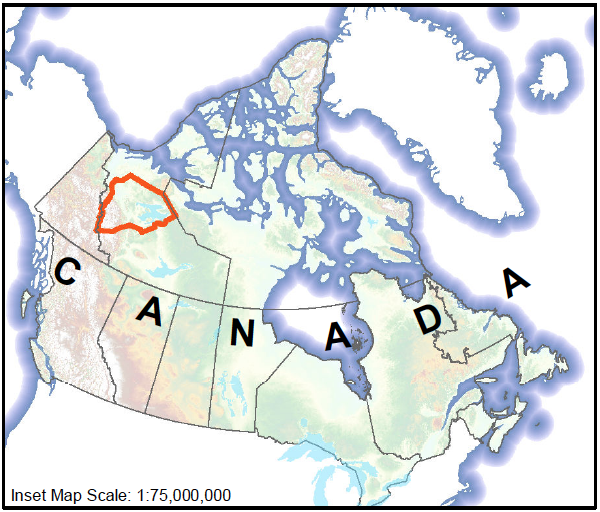Sahtu Land Use Plan Assessment Report Released
In February 2017, the Sahtu Land Use Planning Board released the Sahtu Land Use Plan Assessment Report prepared by HTFC Planning & Design.
The Sahtu Land Use Planning Board (SLUPB) is responsible for developing and monitoring the implementation of a land use plan that guides development and conservation of a vast area of land — four million hectares in size — in The Northwest Territories. Fifteen years in the making, the Sahtu Land Use Plan was finally adopted in August 2013. Following three years of implementation, the Planning Board retained HTFC Planning & Design to conduct an assessment of the Sahtu Land Use Plan’s development and implementation to date.

The intent of the assessment was to engage with Sahtu planning partners to evaluate the awareness and effectiveness of the Sahtu Land Use Plan and identify challenges and opportunities by reviewing past plan development and current plan implementation performance. To achieve this goal, HTFC conducted 17 in-depth interviews with representatives from Sahtu First Nations and Metis communities, Mackenzie Valley Regulatory Boards, and the Federal and Territorial Governments. HTFC also developed a detailed survey questionnaire and sent out surveys to more than 70 other organizations that use the land use plan, including renewable resource councils, oil and mining companies, and non-profit organizations like Ducks Unlimited and CPAWS. HTFC then reviewed and analyzed the interview and survey data according to the assessment framework developed in conjunction with the Sahtu Land Use Planning Board.
The result is an Assessment Report structured around three important time periods for the Plan. The first section, Looking Back, examines the lessons learned during the Plan development between 1998 and 2013. The second section, Working Now, examines the time period between 2013 and the present. This section analyses awareness and understanding of the Plan, applicability of its vision and goals, functionality of its conformity requirements and the current effectiveness of monitoring plan implementation. The last section, Moving Forward, sets fifteen priorities for the Sahtu planning partners to consider while they continue to implement the Land Use Plan and prepare for its upcoming 5-year review.
HTFC would like to extend sincere thanks to all of the individuals who supported this work by completing surveys and interviews as well as to the SLUPB staff who supported the HTFC team throughout the project.
A digital copy of the Sahtu Land Use Plan Assessment Report is available here: https://sahtulanduseplan.org/sites/default/files/slup_assessment_report_-_jan_517.pdf





